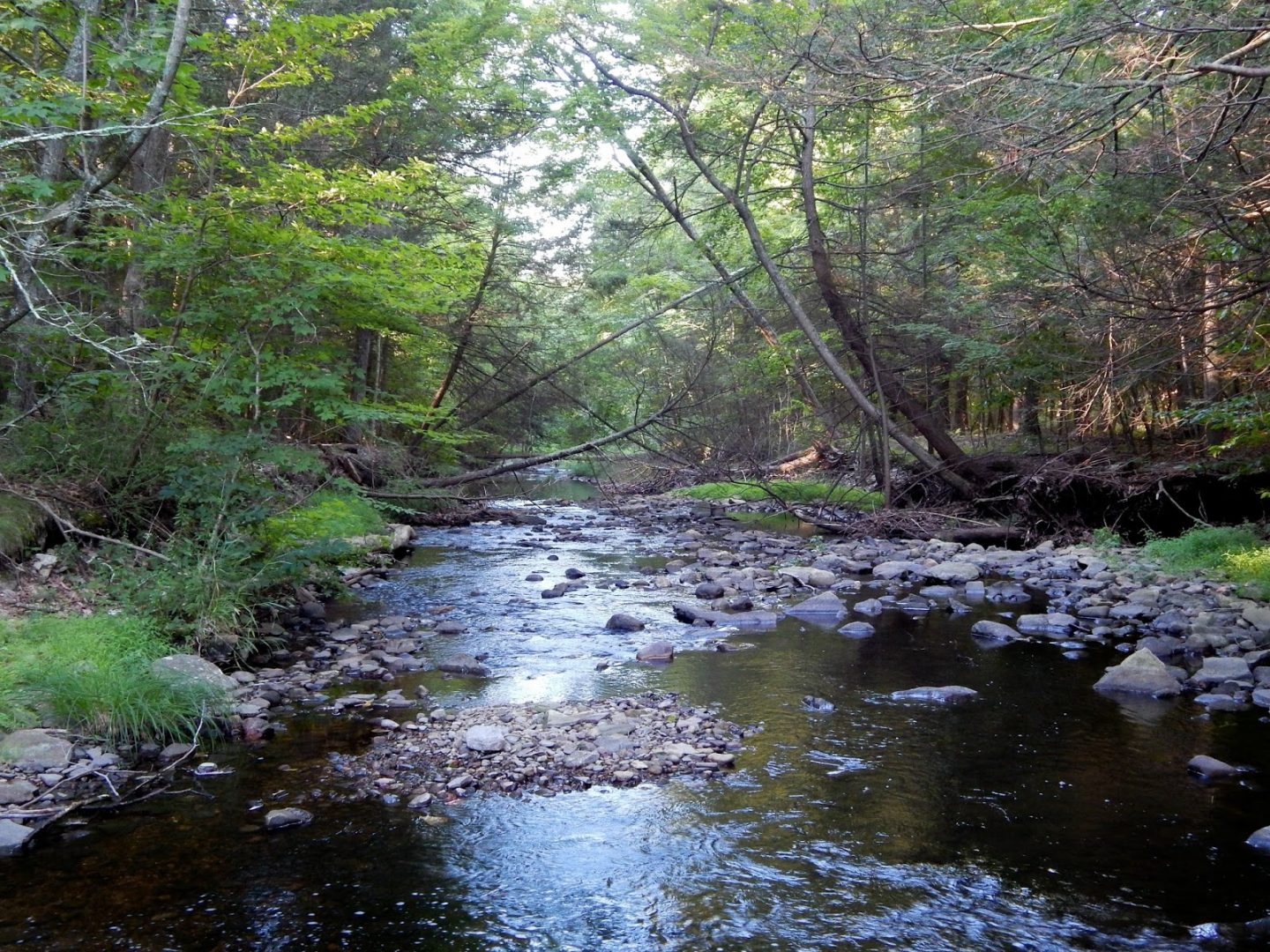Small but important
What is a “small stream”? A small stream is defined as a channel or drainage that carries water at any time of the year, with continuous, definable banks and an average undisturbed channel width of 3 m or less. Three meters is chosen as the channel width cut-off because this is the maximum undisturbed width of the smallest non-fish-bearing stream class (S6) regulated under the province’s Forest and Range Practices Act. Small streams and the plant communities alongside them are valuable ecosystems because they often support a diversity of vegetation, invertebrates, and vertebrates not found in other areas of a watershed. Along with supporting unique assemblages of plant and animal species, small streams have been shown to contain necessary habitat for juvenile fish. Whether they contain fish or not, all small streams contribute to water, sediments, nutrients, and vegetative matter to downstream fish-bearing reaches. These contributions are increasingly being recognized as the key drivers of overall watershed condition and function. Changes to small streams that result from harvest activities close to a stream edge include: higher water temperatures; changes to large wood supply and in-stream volumes; increased sediments; loss of bank vegetation, leading to lower amounts of terrestrial invertebrates and coarse particulate organic matter; fluctuations in stream flow dynamics and changes in benthic invertebrate communities. These changes could affect ecosystem processes beyond the harvested reach, also impairing downstream condition and function.
During the study, temperature and shading were measured in stream banks before and after clear cuts. Results showed a rise in temperature during the time and lower shadow level in a year or two after the clear cuts around river banks, but the shadow might have been due to the small plants growing, so the shadow was also measured in a few meters higher and the result was different from ground level. Water quality showed that plants, actually big trees that grow on the banks reduce and stop erosion. Water was less transparent after the cuts due to releasing of sediments which were stabilized before among complex root system. The suggestion was that some trees remain on the banks after the cut so that the ecosystem would survive.
The method included a large number of sensors for temperature and shade along streamlines. I was wondering if this amount of data collection was really necessary. Couldn’t there be some other methods that would have used middle parameters and comparing with similar conditions in other places; in case there were not so many sensors available what would have been done? And I didn’t see any try to find correlations between measured parameters. For example relation of temperature and shade and height or other parameters like the first plants that tend to cover the area and the dominant ones.
The topic and method were different from my thesis issue and not of much use but I learned from it which was good.
Among questions was one referring to making data available for further studies, which might not be. And I had another question which was did they compare the temperature in an adjacent area (witness are) which wasn’t subject of clear-cut?


Recent Comments